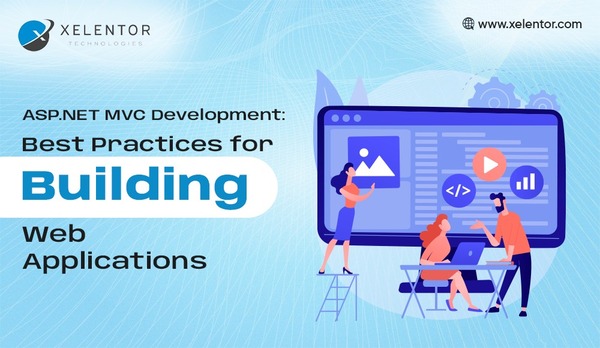In the current scenario, where cyber attacks are increasing at a faster rate, the need to protect web applications has become paramount. With a view to this, ASP.NET MVC has come into the picture. This technology is widely used by web developers to build web applications to ensure data safety and protection. But what is it and how is it operated? Let’s delve further to understand it.
What is ASP.NET MVC Development – A Brief Overview
ASP.NET MVC is a technology (server-side) developed by Microsoft. This is generally used to build websites and web applications using languages like CSS, HTML, and JavaScript. It is a free web framework that can be easily used by developers with the help of well-maintained programming architecture and various software engineering tools and practices.
This ASP.NET MVC seamlessly combines the main components of Model-View-Controller (MVC) and the main parts of ASP.NET.
This is a new-age technology that stands as an alternative to traditional web forms of ASP.NET.
But how does ASP.NET and MVC come together to build web applications? Let’s look at some of the best practices to integrate ASP.NET MVC into the development process of web applications.
ASP.NET MVC Development: Building Web Applications
Following are some of the best practices to integrate ASP.NET MVC Architecture into the process of web application development.
- Correct Usage of MVC Pattern
Separating arising concerns using the MVC pattern is a basic rule to implement. Besides that, it is imperative to keep the essential business logic in models, control flow in proper controllers and presentation-related logic in views only. By doing so, you must make optimum use of the MVC pattern.
- Leverage the Use of Dependency Injection
To enhance the testing process, managing dependencies is critical. This is where leveraging the use of dependency injection comes into play. ASP.NET Core, with its built-in features, fulfils this need with efficiency and reliability.
- Precisely Follow Essential RESTful Principles
To build intriguing and sustainable APIs, it is vital to strictly adhere to essential RESTful (Representational State Transfer) conventions for routing purposes during the Web Development Process, to ensure a seamless customer experience.
- Efficiently use Asynchronous Programming
To enhance the performance and scalability of web applications, you must use asynchronous programming along with await for I/async/O-bound operations for better execution.
- Ensure Proper Validation
To enable appropriate data integrity and provide a first-class user experience, it is necessary to utilise data annotation for both client and server-side validation in order to streamline the process.
- Optimise the Overall Performance
Before launch, it is important to optimise the overall performance of your application by implementing cutting-edge strategies, using effective algorithms, and streamlining database management. This can significantly improve the quality and reliability of the application in the eyes of the customers.
Final Thoughts
From making effective use of MVC patterns to optimising the overall quality and performance of the web application, there are several essential practices to implement. The ASP.NET MVC Framework in the process of developing an intriguing web application to ensure safety and stability.




